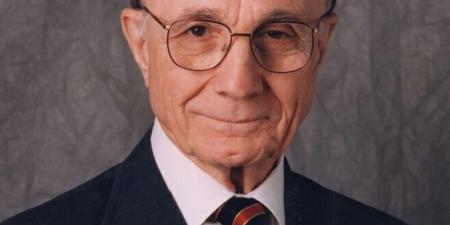"Nancy Cruzan died January 11, 1983, when she was but 25 years old. Unfortunately for her, for those who loved her, and indeed for all of us, she died at a time and in a place that does not recognize her death. Consequently, she has never been buried or cremated, but instead kept in a hospital bed for nearly seven years. High medical technology has sustained only the most rudimentary of her biological processes"1.
The inscription on Nancy Cruzan's grave marker and the message Professor Richard Momeyer conveys in a viewpoint that ran less than a year before a lower court judge ruled Cruzan's feeding tube could be removed arrive at the same conclusion: Nancy Cruzan, the person, died 7 years before her biological processes were allowed to cease and her body was let to expire. This young woman's life story was interrupted after she lost control of the vehicle she was driving on January 11, 1983. She was thrown 35 feet from the car into a water-filled ditch, where she landed face first and experienced approximately 15 minutes of anoxia. The paramedics who arrived at the scene of the accident were able to restore her heartbeat, but her cerebral cortex, seat of awareness and thought, was irrevocably damaged. Cruzan would never regain higher brain function.
Nancy, in her persistent vegetative state (PVS) could no longer experience anything of the world around her, except perhaps pain. Determined to see their daughter at peace, her parents undertook a prolonged legal struggle that led to the US Supreme Court. If they could obtain a court order to have her feeding tube removed, Nancy who was already "gone" could be put to rest. But they were confronted with the perspectives of others for whom life in any condition, sustained by whatever means, is of absolute value. To the latter, removal of the feeding tube would be morally wrong, inasmuch as it would result in the patient's death. In addition, they argued, the action would open the door to killing people who no longer seemed of use to anyone2.
By the time the Cruzan case reached the Missouri Supreme Court in 1988, that court had recognized a competent person's right to refuse treatment as part of the doctrine of informed consent. For decisions to be made on behalf of an incompetent patient, however, the court required "clear and convincing" evidence that the patient would have wanted treatment terminated under such circumstances. The court decided to "err on the side of life," where what was at issue was not Nancy's "right to die," but the right of others to take her life. Judge Edward Robertson's opinion read: "Nancy is not dead, nor is she terminally ill. This is a case in which we are asked to allow the medical profession to make Nancy die by starvation and dehydration. The debate here is thus not between life and death. It is between quality of life and death"3.
In the majority opinion of the landmark 1990 case, Cruzan v Director, Missouri Department of Health, the US Supreme Court broadened the ruling of the Missouri Supreme Court, though it still did not grant the Cruzans the victory they were after4. The Court recognized a competent person's constitutionally protected right to refuse life-prolonging treatment (including hydration and nutrition). In the case of incompetent persons, a state could adopt a standard that required "clear and convincing" proof of a person's preferences. The Court sent the case back to Missouri courts, which, later in 1990, ruled that there was sufficient evidence that Nancy would not want to be kept alive.
Beyond recognizing at the federal level that patients have the right to see their end-of-life care wishes honored, the Cruzan case, through the publicity it generated, brought the matter of PVS to public awareness. It asked people to give serious thought to what medical treatment, life support, and quality of life they would want should they become incapacitated. And it accelerated the development of medical and legal actions people could take to record those wishes.
In 1991, as a result of the Cruzan decision, the federal government enacted the Patient Self-Determination Act, which requires hospitals, nursing facilities, hospices, home health care programs, and health maintenance organizations to inform patients about their right to make forward-looking care and treatment decisions through the use of advance directives. In the years following the Cruzan decision, states enacted medical proxy laws, whereby individuals could designate someone to make medical decisions for them if they become incapacitated, and developed a variety of living wills, legal statements of individuals' end-of-life care wishes.
The Cruzan legacy was to foster the development of mechanisms for safeguarding the interests of people who become incapacitated at the end of life. Others could avert the tragedy of the Cruzans—and free themselves of some of the fear around end of life. A recent article, however, points to the fact that few people take advantage of the options the case made available to them: only 10 percent have living wills to reflect their wishes regarding end-of-life care, should they become incapacitated5.
Still, Nancy Cruzan is responsible for a Supreme Court decision that helped to empower people—competent and incompetent—with choices at the end of life.
"I think this is quite an accomplishment for a 25-year-old kid," her father said, "and I'm damn proud of her."
References
-
Momeyer R. Finally, let's admit Nancy Cruzan is dead. Newsday. April 16, 1990:43.
-
Engram S. Ruling to let Nancy Cruzan die shows the value of a living will. San Diego Union-Tribune. December 28, 1990:D5.
-
23"Cruzan v Harmon, 760 SW2d 408 (Mo. 1988).
-
Cruzan v Director, Missouri Department of Health, 497 US 261 (1990).
-
Editorial Writers Desk. A gift for the living. Los Angeles Times. June 3, 2001:M4.



